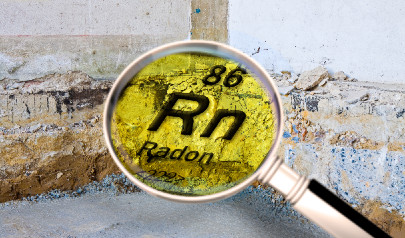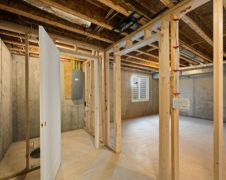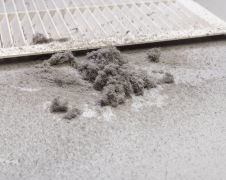Are there safe radon levels?
You work hard to keep your home clean and safe for your family. You change air filters and vacuum. Each month, you check the batteries in your smoke detector. In the showers, you scrub hard to eliminate any mold before it takes hold. Sure, you've heard about carbon monoxide, but there may be things in the air in your home that you aren't aware of yet. Unfortunately, things are floating around in the air that you don't know about.
You may have heard about getting a radon test, but you aren't sure what that is or how much you should expect to find in your home. Here's everything you need to know about radon and radon levels.
What is radon?
Radon is a colorless, odorless gas that occurs naturally. Since it's in the air, you find it almost everywhere you go. However, this gas is radioactive. Breathing in radon gas in a large enough quantity over a long enough time can lead to lung cancer in people, making it essential that you know how much radon is in your home.
In the United States, radon is the second greatest cause of lung cancer. Radon-related deaths due to  lung cancer in the U.S. each year are around 21,000 people. You're probably being exposed to radon at home and at work, while your children are exposed at school. Radon pools indoors after drifting in through openings or small cracks in the foundation of a building.
lung cancer in the U.S. each year are around 21,000 people. You're probably being exposed to radon at home and at work, while your children are exposed at school. Radon pools indoors after drifting in through openings or small cracks in the foundation of a building.
Fortunately, it's easy to test for radon gas in your home, and there are professional companies that remove it from buildings. There are amounts of radon that are considered acceptable levels and others you don't want to exceed. While you expect to find some radon gas in your home, you probably don't know how much is too much. Also, you need to know when to call in a professional for testing and removal if the levels are too high.
What Level of Radon Should You Expect in Your Home, and How Much Is Too Much?
Of course, there is probably radon gas already in yours since it's pretty much everywhere, but you need to know how much to expect and what a safe level of radon is. First, you need to know how radon is measured to better understand the testing process. Radon gas is measured in picocuries per liter of air (pCi/L). According to the Environmental Protection Agency (EPA), it's expected to find a radon gas level of 1.3 pCi/L in your home.
There are short-term and long-term tests to determine the amount of radon in your home. With a short-term test, you leave the measurement tool in your home for between two and 90 days, while long-term tests are left in the house or enclosed space for longer than 90 days. This is because radon levels in an enclosed area can fluctuate from one day to the next.
While a radon level of two is as safe as you can expect in your home, anything above a four requires immediate action. A short-term test needs to be repeated if it comes up with a level above four. A professional restoration service can help remove the radon gas from your home when the levels are too high for your family's safety.
Reasons to Hire a Professional Company to Lower the Radon Levels in Your Home
If you've tested your home for its radon levels, and you're feeling a little uneasy about the results, you need to hire a professional company for radon mitigation. They'll install a system that safely removes radon from your home so that it doesn't build up inside. In fact, some builders are already building homes that don't allow radon in. Here are a few reasons to hire a professional company to lower the radon levels in your home:
- Peace of mind: When it comes to your home, you need to know that the job is done right. A professional company has the skills, know-how, and equipment to place a radon mitigation system into your home. You can rest assured that the radon gas entering your home is being funneled out through the installed system and that your family is breathing fresh air.
- The health of your family: As the second leading cause of lung cancer, radon gas isn't a
 harmless gas that you don't need to worry about. If the level in your home is above four, then you must hire someone to place a radon mitigation system in your home. Suppose you have young children or elderly parents living in your home. In that case, you might consider hiring a professional company to install the system when the levels are lower than the danger level to ensure their overall health as they might be a higher risk group.
harmless gas that you don't need to worry about. If the level in your home is above four, then you must hire someone to place a radon mitigation system in your home. Suppose you have young children or elderly parents living in your home. In that case, you might consider hiring a professional company to install the system when the levels are lower than the danger level to ensure their overall health as they might be a higher risk group. - Increase the resale value of your home: When you go to sell your home, you want to get as much money as possible for it, and a radon mitigation system might attract a buyer willing to pay top dollar. You want to make sure that your real estate agent knows about the system and includes it in the listing. Offering cleaner air in a home can be a huge plus and help you sell the house more quickly. Any value you can add will bring the asking price up to and set your home apart from other homes on the market.
At AdvantaClean, we understand how essential it is to keep the radon levels in your home as low as possible. We want to partner with you to keep you and your family safe. Radon mitigation is just one of the many services we offer to restore your home to tip-top shape and to keep your family healthy. If you have questions or concerns about radon levels in your home, contact us now to learn more.

